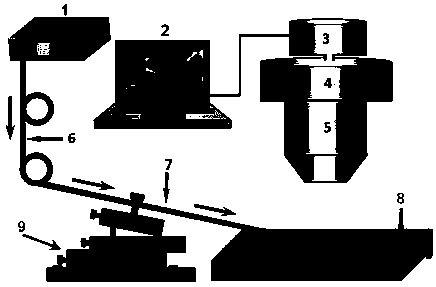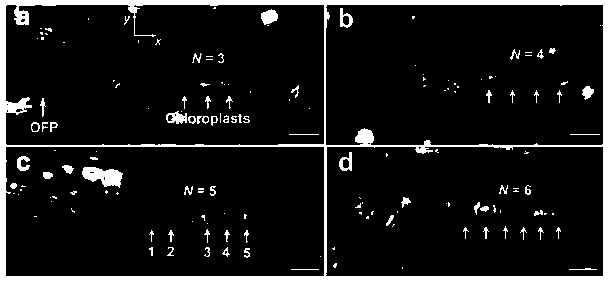Plant living cell capture and control device and method based on optical fiber probe
An optical fiber probe, a technology for living plants, applied in the field of optics, can solve problems such as huge optical systems, organelle manipulation, limited penetration depth of optical tweezers, etc., to achieve the effect of coordinating cell functions and promoting communication
- Summary
- Abstract
- Description
- Claims
- Application Information
AI Technical Summary
Problems solved by technology
Method used
Image
Examples
Embodiment 1
[0089] The living plant used in this embodiment is an aquatic algae plant, scientifically named Hydra verticillium, and the leaves of the plant are transparent, which is convenient for studying the characteristics of chloroplasts.
[0090] After the laser light passes into the fiber optic probe 6, due to y The effect of the optical gradient force on the optical axis direction, the free chloroplasts around the optical fiber probe 6 will be captured and limited on the optical axis of the optical fiber probe 6, and the chloroplasts on the optical axis of the optical fiber probe 6 will be affected by the x The gradient force in the optical axis direction forms a one-dimensional chloroplast array in the optical axis direction.
[0091] Such as figure 2 As shown in a, after a laser with a power of 30 milliwatts and a wavelength of 980 nanometers is passed into the fiber optic probe 6, three chloroplasts are captured and assembled into a one-dimensional array.
[0092] Such as f...
PUM
 Login to View More
Login to View More Abstract
Description
Claims
Application Information
 Login to View More
Login to View More - R&D
- Intellectual Property
- Life Sciences
- Materials
- Tech Scout
- Unparalleled Data Quality
- Higher Quality Content
- 60% Fewer Hallucinations
Browse by: Latest US Patents, China's latest patents, Technical Efficacy Thesaurus, Application Domain, Technology Topic, Popular Technical Reports.
© 2025 PatSnap. All rights reserved.Legal|Privacy policy|Modern Slavery Act Transparency Statement|Sitemap|About US| Contact US: help@patsnap.com



